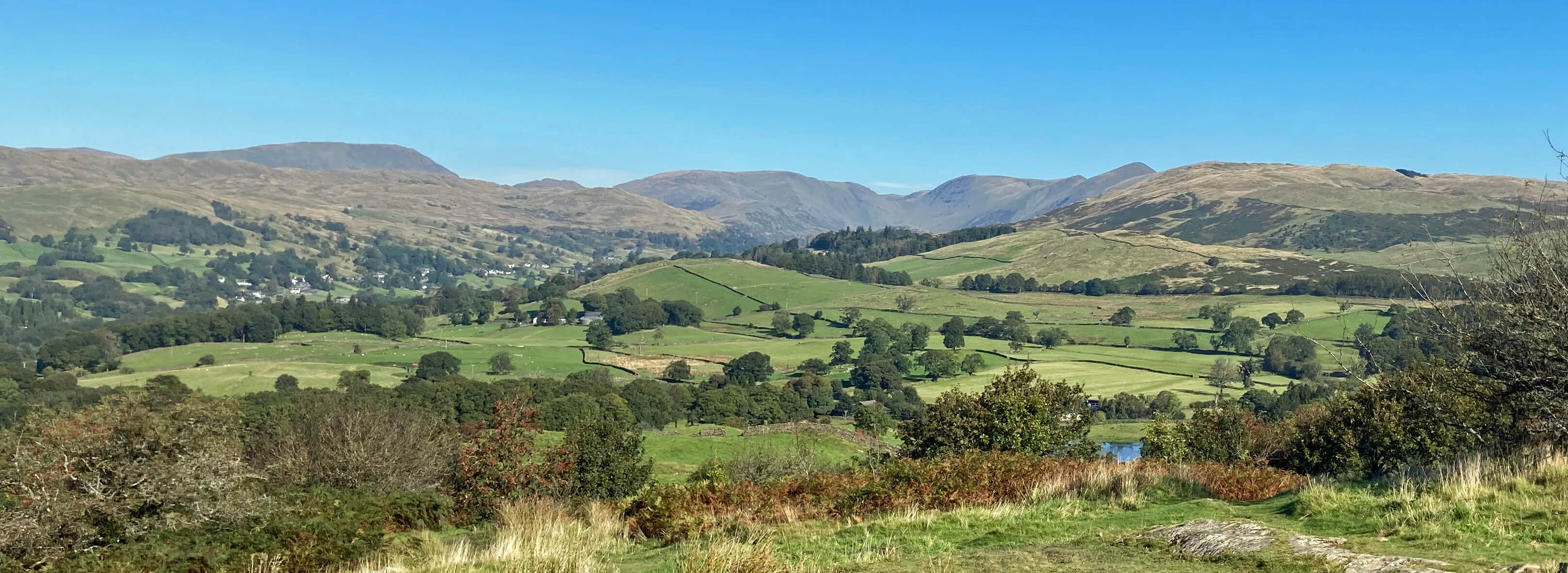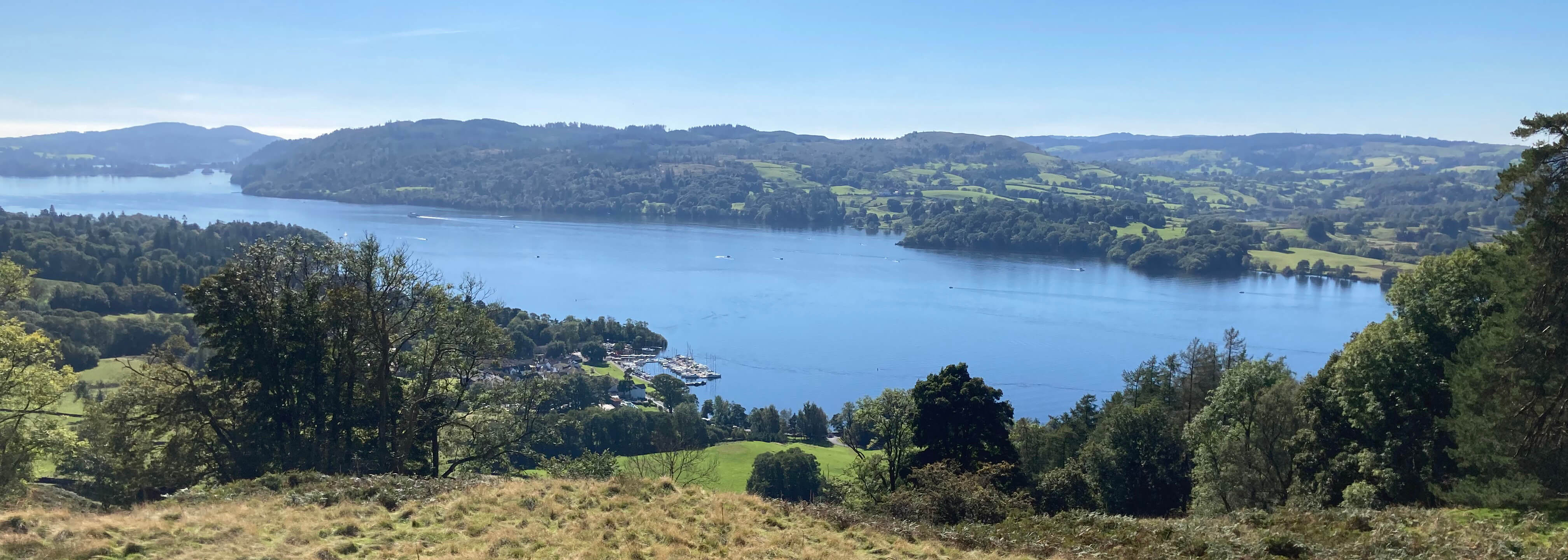

Home Preamble Index Areas Hills Lakes Dales Map References Me Drakkar

West from Orrest Head
For many visitors the Orrest Head viewpoint sparks a love of the Lake District. For those returning after a long absence it may cause a reignition. The excellence of the view from Orrest Head, less than a mile north of Windermere railway station, has long been recognised. Thomas De Quincey, writing in the 1820s (in a style not seen today, so I include the words in full), saidThe sublime, peculiar, and not-to-be-forgotten feature of the scene is the great system of mountains which unite about five miles off at the head of the lake to lock in and inclose this noble landscape. The several ranges of mountains which stand at various distances within six or seven miles of the little town of Ambleside, all separately various in their forms and all eminently picturesque appear to blend and group as parts of one connected whole; and, when their usual drapery of clouds happens to take a fortunate arrangement, and the sunlights are properly broken and thrown from the most suitable quarter of the heavens, I cannot recollect any spectacle in England or Wales, of the many hundreds I have seen bearing a local, if not a national, reputation for magnificence of prospect, which so much dilates the heart with a sense of power and aerial sublimity.Thomas De Quincey (1785-1859) is a strange character to encounter in a history of the Lake District. He was born in Manchester, moving to Bath, and soon became enamoured with Wordsworth or at least with his poems. At the age of seventeen he wrote to Wordsworth that he was a disciple "ready to sacrifice even his life". Wordsworth replied cautiously, as anyone would. Undeterred, De Quincey set off (twice) for Grasmere only for his nerve to fail him almost at Wordsworth's doorstep. Four years later, he tried again, with more courage. The Wordsworths 'adopted' him and a few years later De Quincey took over the tenancy of Dove Cottage, which the Wordsworth Museum is now adjacent to.
The finest extensive view-point in the Lake District, and, perhaps, the finest in Great Britain.I duly reached the top of Orrest Head (only 240 metres high) and found a score of people already there admiring the view, with almost as many benches for us to sit on. Clearly, this is a place to walk your grandparents or if you are a grandparent to walk yourself.

North from Orrest Head
There are distant hills to see to the east but it is, of course, the western panorama that holds the attention. On the skyline, from the north, can be seen Red Screes, Wansfell Pike, Fairfield, Great Rigg, Ullscarf, High Raise, Harrison Stickle, Great Gable, Great End, Bowfell, Scafell Pike, Crinkle Crags, Wetherlam and the Old Man of Coniston. On this occasion, the view was not crystal clear but the beguiling softness of the scene lent a depth to the fells, including the ones below the skyline. Nearer, almost the full length of Windermere was displayed below.
Troutbeck
I suspect that it was really that Wordsworth didn't want to see any sign of other people spoiling his fells. Although he was a Cumbrian, Wordsworth was not a man of the local people or at least less so than De Quincey, who had to marry one of them. Wordsworth disapproved but perhaps more because of the marrying than the fathering, since he had himself managed the latter but not the former in France.
Windermere from my bench
After rest and refreshment I walked on to Ambleside. All walkers form memories of and associations with the tracks they walk along. For me, for us, Robin Lane will always be Sheena's path. She bravely insisted on walking all the way to Ambleside although clearly in difficulty. The plan had been that we'd all walk from Troutbeck along Robin Lane to a good view of Windermere (to about where my bench was) and then Sheena and a driver would return to the car and proceed to Ambleside to meet up with the rest of the group who would continue along the track. Sheena wasn't having that. She wanted to continue as if it were normal, for as long as she was able. It is not a difficult track but it becomes so if you do not have full control of your legs. I doubt that Sheena ever walked as far again. She died four years ago today as I write.
Windermere from near Ambleside
Home Preamble Index Areas Hills Lakes Dales Map References Me Drakkar
© John Self, Drakkar Press, 2018-

Top photo: Rainbow over Kisdon in Swaledale; Bottom photo: Ullswater